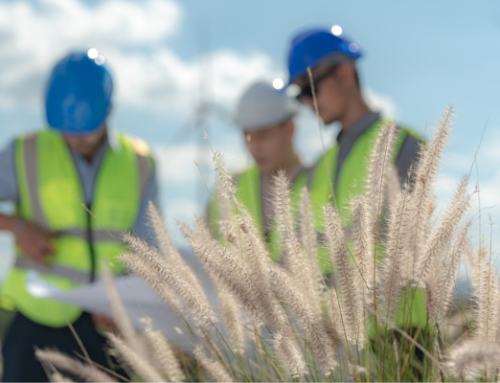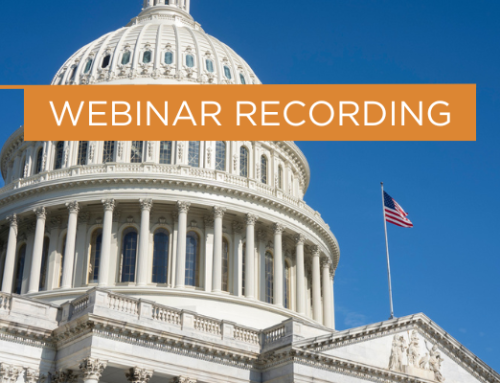Key points covered in this article:
- The OBBBA restores immediate expensing for domestic R&E costs starting in 2025, allowing construction companies to deduct qualifying expenses in the year they occur, improving cash flow and enabling reinvestment.
- Smaller companies can retroactively amend returns for 2022–2024 to claim full deductions, while larger companies can recover remaining deductions from the previous five-year schedule.
- Qualifying activities include process improvements, material testing, and jobsite innovations, with opportunities to pair Section 174 deductions with Section 41 R&D credits for additional tax savings.
What’s Section 174? It’s a popular tax provision for U.S. businesses, and now with a new tax law in effect, it’s more valuable than in years prior. The One Big Beautiful Bill Act (OBBBA) was signed on July 4, 2025; among its many changes is the immediate expensing of research and experimental (R&E, often called R&D) costs. Starting in the 2025 tax year qualifying R&E expenses can again be deducted during the year they are incurred. Previously, these deductions needed to be stretched out equally over five years.
Construction companies may see a big benefit here. Faster tax savings often means stronger cash flow and a greater ability to invest in equipment or the next project. Many of these businesses already have hidden R&E activities built into everyday operations. The key is knowing what qualifies and how to maximize the advantage.
What Changed Under OBBBA
Most construction companies are more familiar with the term R&D than R&E. Technically, the tax code refers to “research and experimental” activities under Section 174, but the two terms are often used interchangeably. What matters is the outcome: qualifying costs that once had to be capitalized and deducted slowly can now be expensed immediately.
For several years, Section 174 stretched out the tax benefit of research and experimental spending over five years. If a construction business spent $400,000 on qualifying work, it could only claim $80,000 in the first year. The rest had to be written off in equal amounts over the next four years. That made for a long recovery and often made it harder to justify large investments in innovation.
OBBBA changes that five-year rule for domestic activities. Beginning in 2025, companies can deduct the full amount in the same year the costs occur. This is the first time in years contractors can see the tax savings from R&E hit their bottom line right away. Costs tied to foreign research must still follow a 15-year schedule.
The law also addresses prior years with a retroactive opportunity. Smaller companies, meaning those with average gross receipts of $31 million or less over the last three years, can amend returns for 2022 through 2024. That allows them to take the full deduction for qualifying costs in those years and potentially receive a refund. To do this, they will need detailed records of the projects and expenses before filing an amended return.
Larger companies can’t amend past filings, but they can still capture remaining deductions from the old five-year schedule. Those amounts can be claimed in one year or split between 2025 and 2026.
What Qualifies as R&E Under Section 174
Section 174 allows businesses to deduct R&E expenses that are directly connected to their trade or business. It must also involve trying to create or improve a product, process, or system. Importantly, there must also be uncertainty about how to get to the end result. Qualifying costs often include wages related to the work, materials used, and payments to outside experts or subcontractors. All of these costs must be documented and directly tied back to the project.
For construction companies, these expenses are often hidden in plain sight. Think of a company that added a new area to its facility for cabinet deliveries. The materials used to build the addition are capitalized and depreciated under one section of the tax code. Additionally, the workflow redesign may qualify for some level of deduction under Section 174. The time spent thinking through how deliveries move through the building, testing layouts, and adjusting processes generally qualifies as R&E. Those costs can now be expensed immediately. That improves cash flow for the current year.
Another example is a contractor in a hurricane-prone coastal area. They are tasked with creating a roof drainage system to comply with new stormwater rules. The team tests materials, measures performance, and refines the layout until the target is met. The installed system looks routine, but it required a lot of research and experimentation. That means that the process used to develop it may meet the criteria for the tax break.
Other common examples include:
- Developing a new schedule to reduce downtime.
- Testing materials for energy savings.
- Creating safer or more efficient jobsite processes.
- Designing project management, estimating, or BIM software.
- Redesigning warehouse layouts to streamline material handling.
These activities don’t always look like “research” in the traditional sense. But if there’s experimentation, testing, or uncertainty about how to reach the end result, they may qualify and that can lead to immediate tax savings.
How Section 174 Differs from Section 41
It’s important to distinguish the Section 174 R&E deduction from the more well-known Section 41 R&D credit. Section 174 lowers taxable income immediately, while Section 41 creates an additional credit on top. Both can potentially apply to the same project; however, they operate differently:
- Section 174 allows immediate expensing of qualifying R&E costs. This includes wages, materials, and subcontractor costs tied to experimentation or process improvement. Companies will want to keep records of the activities and associated costs.
- Section 41, the R&D tax credit, goes a step further by reducing the actual tax owed, dollar for dollar. To claim it, companies must meet a four-part test that looks at whether the work is technological in nature, involves uncertainty, and includes a process of experimentation.
Maximizing the Tax Benefit
The return of the immediate deduction can be an extremely useful tool for construction companies. It may ultimately affect cash flow, project schedules, and the ROI from innovation activities. Common considerations include:
- Choose the best timing. If there’s flexibility in planning, some companies will benefit most by claiming the entire amount in 2025, but other companies might see better results by taking part of the deduction in 2026. It may be worth running the numbers for both years before making a decision.
- Coordinate with the R&D credit. A project that qualifies for Section 174 might also qualify for the R&D credit under Section 41. The key is to know the rules and then track costs so expenses are allocated correctly.
- Keep thorough records. The IRS will want to know what was done, the technical challenge involved, and how the company worked through it. It’s helpful to keep payroll records, invoices, and subcontractor agreements with the project files.
- Review past years for retroactive opportunities. Smaller companies that qualify under the gross receipts limit may be able to amend 2022–2024 returns and get a refund. The value of doing that depends on the amount involved and the effort it will take to prepare the filings.
Conclusion
This change to Section 174 gives construction companies a faster path to tax savings and better cash flow. Those eligible for the retroactive benefit may also recover taxes from prior years. Reviewing recent and planned projects now will help ensure the deduction delivers the greatest advantage. For more information on your specific situation, contact Jennifer French, Partner on the PBMares’ Construction & Real Estate team.





